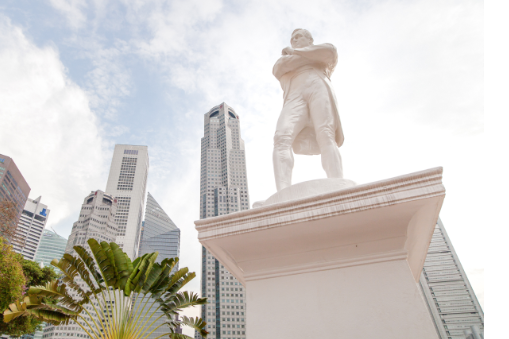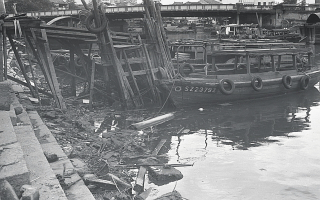History of Singapore River
THE RIVER MERCHANTS, Flint Street
The Singapore River is the historic heart of the city and the foundation upon which Singapore has been built – the destination of choice for both locals and visitors due to its diverse offerings and welcoming ambience.
In 1819, Sir Stamford Raffles arrived on Singapore River and established a British trading outpost. For more than a century afterward, the river was Singapore’s main commercial lifeline.
The Singapore River provided as an ideal natural artery, which allowed the city to flourish as trade flourished. This spurred her to grow rapidly, and establish herself as a busy entrepôt in Southeast Asia.
However, with the increase in trade and commercial and economic activities, The river and nearby areas began to suffer from urban overcrowding and serious water pollution.

Statue of Sir Stamford Raffles, North Bank

By the 1970s, the river became unable to deal with modern shipping and trading activity gradually moved to Keppel Harbour, paving the way for the redevelopment of the river.
In 1977, the government, spearheaded by the Ministry of Environment, began the mammoth task of cleaning up Singapore River.
Works undertaken to redevelop Singapore River included dredging the river, rebuilding the river walls along the entire stretch of Singapore River and the construction of a 6km long promenade along both banks of the waterfront.
CLARKE QUAY , Singapore River
By the end of 1983, the river’s environment had improved dramatically, and the Urban Redevelopment Authority (URA) undertook the responsibility of formulating comprehensive redevelopment strategies for derelict areas around the river.


Today, the Singapore River has transformed, from a working waterway to an attractive waterfront environment for housing, recreation, entertainment and commercial. The mix of new developments and conserved buildings lend charm and preserve the memory of the river’s past, while standing poised for another chapter in its long and colourful history.

